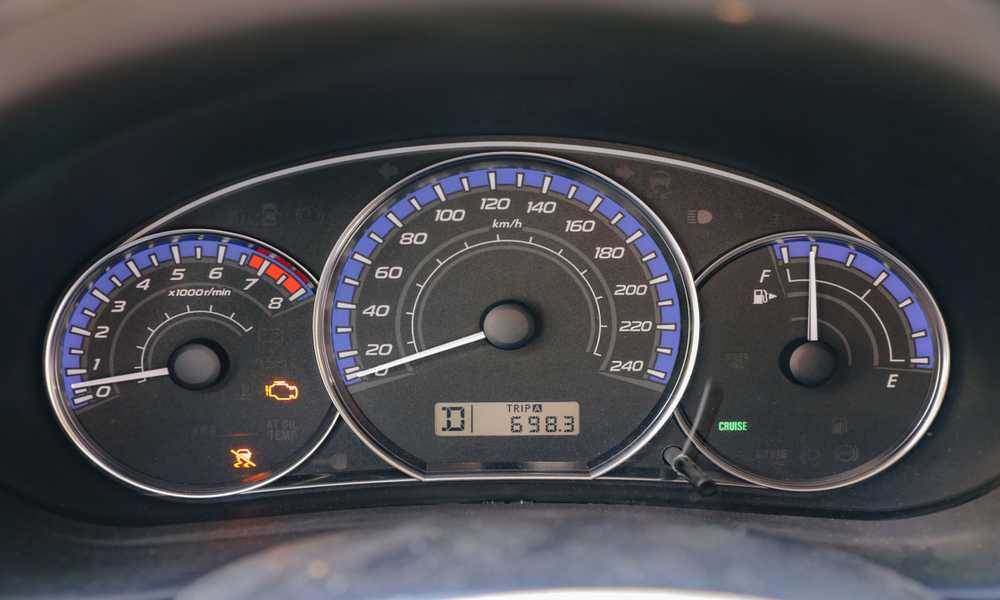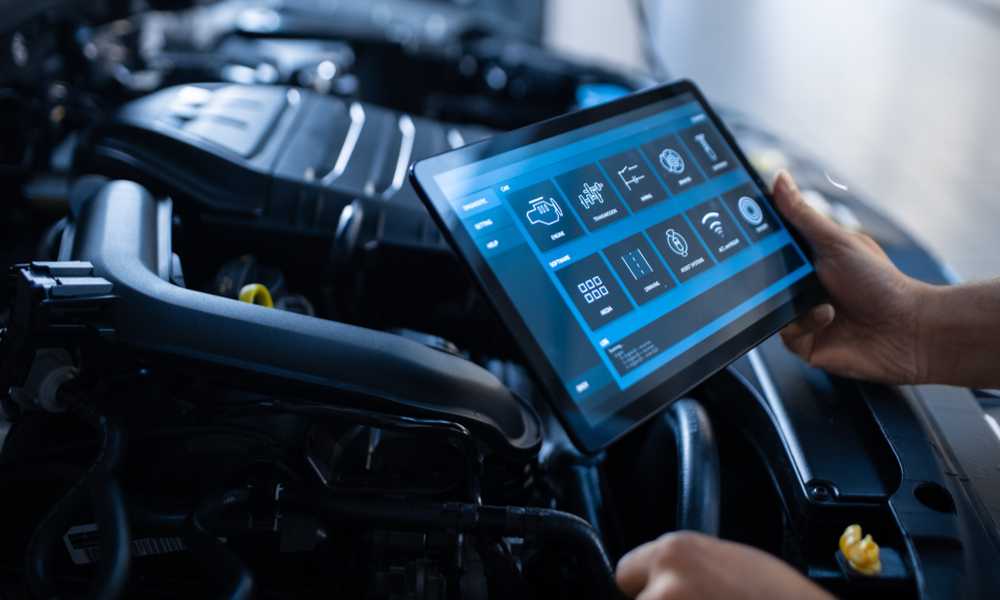Are you worried about your car’s check engine light being on and wondering if it will pass inspection? You’re not alone. Many drivers have the same concern, especially because laws and regulations can vary from state to state. In this article, we’ll explore whether can a car pass inspection with check engine light on, what causes it to turn on in the first place, and how to fix it. Don’t let that pesky light stress you out—read on for all the answers!
What the check engine light means, and what the most populated states have in their laws about it
The check engine light is a warning system in your car’s onboard diagnostics (OBD) system that alerts you to mechanical or electrical problems. When the light illuminates, it means something isn’t working properly within the engine or emissions control system. It could be anything from a loose gas cap to a major engine malfunction.
Most states require cars to pass an annual inspection, and many have specific rules about the check engine light. For example, California requires all vehicles made after 1996 to pass a smog test every two years, and any car with the check engine light on will automatically fail unless it has been repaired and driven for several days before testing.
In Texas, cars are required to undergo an annual safety inspection as well as an emissions test in certain counties. If the check engine light is on during either of these inspections, it will result in an automatic failure.
New York also requires annual safety and emissions inspections but allows drivers one retest if their car fails due solely to the check engine light being on. However, after that second attempt, repairs must be made before another inspection can take place.
It’s important to know your state’s laws regarding inspections and how they relate to the check engine light so you can ensure your vehicle remains safe and compliant on the road.
How can you check engine light need to be off to pass inspection?
To pass a car inspection, the check engine light needs to be off. But how can you check if your car is ready for inspection? One way is to use an OBD-II scanner, which can read and clear diagnostic trouble codes (DTCs). These codes are what trigger the check engine light to turn on in the first place.
If your car has been serviced recently and any issues have been fixed, it’s important to drive your vehicle for a few days before getting it inspected. This will give time for the system monitors to reset themselves and ensure that there are no pending or current DTCs.
Another method of checking whether your car is ready for inspection is by using the “drive cycle” procedure. This involves driving your vehicle under specific conditions such as speed and load, which allows all of the system monitors to complete their self-tests.
It’s essential not only that you get necessary repairs done but also take steps so that your vehicle resets itself before taking an inspection test.
Can AutoZone clear check engine lights?
AutoZone is a popular auto parts retailer that offers free diagnostic testing services for customers who have a check engine light on. However, it’s important to note that AutoZone does not clear these codes from your vehicle’s computer system.
When you bring your car into an AutoZone store, they will use a scan tool to read the code(s) stored in your vehicle’s computer system. They will then provide you with a printout of the code(s), along with some basic information about what those codes mean and some possible causes for them.
While this can be helpful in diagnosing the issue with your car, it doesn’t actually fix the problem or clear the check engine light. To do that, you’ll need to either address the underlying issue yourself or take it to a mechanic who can make repairs and clear the codes.
While AutoZone can be a useful resource for understanding why your check engine light is on, they cannot actually clear those codes from your car’s computer system.
How do I clear my check engine light without a scanner?
Clearing a check engine light without using a scanner may be possible, but it largely depends on the root cause of the problem. Some causes can be resolved simply by disconnecting the battery for about 30 minutes and then reconnecting it. This method will remove any stored codes in your car’s computer and clear out the check engine light.
Another way to potentially clear your check engine light is to use an OBD-II code reader that you can borrow or rent from an auto parts store. These readers allow you to scan your vehicle’s computer system and identify any error codes that are causing the check engine light to turn on. Once you have identified these codes, you can look them up online to determine if there are any simple fixes.
In some cases, clearing a check engine light without a scanner may not be possible. If this is true for your vehicle, it’s important to address whatever issues are causing the warning lights as soon as possible before they escalate into more serious problems down the line.
How many miles does it take to clear a check engine light?

One common question that car owners ask is how many miles it takes to clear a check engine light. Unfortunately, there’s no straightforward answer to this question since the number of miles necessary for the light to turn off varies depending on several factors.
The reason behind your check engine light turning on will determine how long it will take before it turns off again. If the problem has been fixed and you’ve addressed all underlying issues, then the light should go away immediately or after driving a short distance.
However, suppose you have failed to fix any underlying problems causing your check engine light to stay on. In that case, you must drive around 50-100 miles before taking another scan test or inspection.
It’s important not to ignore a persistent check engine light because doing so can lead to more significant problems down the road and costly repair bills. So if your vehicle displays an illuminated warning sign, seek help from an experienced mechanic as soon as possible.
Tell me the most common cause of a check engine light?
The check engine light can be triggered by a variety of issues, ranging from minor to severe. The most common cause is a faulty oxygen sensor, which monitors and regulates the air-to-fuel ratio in your engine. When this sensor fails or becomes dirty, it can cause an imbalance that triggers the check engine light.
Another common culprit is a loose or damaged gas cap. If the gas cap isn’t tightened properly or has become cracked over time, it can allow fuel vapors to escape and trigger the check engine light.
Problems with your catalytic converter can also trigger the check engine light. This device helps reduce emissions by converting harmful gases into less harmful ones but if it’s not functioning correctly it could lead to more serious problems down the line.
Issues with spark plugs and wires are another frequent cause of a check engine light. They’re responsible for igniting fuel in your car’s combustion chamber and if they’re worn out or damaged, you might notice rough idling or decreased acceleration – leading to further damage over time.
Problems with mass airflow sensors (which measure how much air enters your car’s intake) are another possible source of trouble – as well as issues with exhaust gas recirculation valves (which help regulate emissions).
It’s important to note that these are just some of many potential causes- so always take any warning lights seriously!
What do they check for car inspection in VA?
When it comes to car inspections in Virginia, there are several things that technicians check for. One of the most important aspects is emissions control, which refers to the amount of pollutants your vehicle emits into the environment.
During an inspection, technicians will also look at your brakes and tires to ensure they’re in good condition and functioning properly. This includes checking for proper tread depth on all four tires and making sure brake pads have enough material left.
Lights and signals are another crucial component of a car inspection in VA. Technicians will check headlights, taillights, turn signals, parking lights, hazard lights, license plate lights and backup lights to make sure they’re working correctly.
Other items checked during a car inspection in Virginia include steering components such as tie rods and ball joints; suspension components like shocks and struts; windshield wipers; mirrors; seat belts; horn functionality; exhaust system leaks or damage.
It’s important to note that each state has its own unique requirements when it comes to vehicle inspections. So if you plan on moving or traveling out-of-state with your car soon after passing an inspection in VA make sure you research what other states require!
How to pass NY state inspection with check engine light on?
If you’re a car owner in New York state, then you know how important it is to pass the annual inspection. However, if your check engine light is on, passing can become a challenge. So what can you do?
It’s crucial to diagnose the issue causing your check engine light to turn on. Take your vehicle to an auto shop and have them run diagnostics on the car’s computer system.
Once you’ve identified the problem, fix it promptly before attempting another inspection. This will involve repairs or replacements of any faulty parts or systems that caused the check engine light issue.
After making repairs, drive for at least 50-100 miles under normal driving conditions. This should allow all monitors in your vehicle’s onboard diagnostic system enough time to reset.
When taking your vehicle back for inspection after these steps are completed successfully, make sure that there are no other issues with the car that could cause a failure during testing.
By following these steps and ensuring everything else is up-to-date with state standards during NY State inspections, including lights and brakes functioning correctly – You should be able to pass even with a previously lit-up check engine light!
Can a car pass inspection in NC with the check engine light on?
If you’re a car owner in North Carolina, you might be wondering if your vehicle can pass inspection with the check engine light on. The answer is no – a car cannot pass inspection with the check engine light on, according to state law.
During an NC vehicle safety inspection, certified mechanics will connect your car’s onboard diagnostic system to determine any potential issues. If the check engine light is illuminated or there are any error codes present in the system, it’s an automatic fail.
So what should you do if your check engine light is on? First and foremost, don’t ignore it! It could indicate a serious problem that needs immediate attention. Take your vehicle to a trusted mechanic for diagnosis and repair as soon as possible.
Once the issue has been fixed, give yourself some time before taking your car back for re-inspection. Your onboard diagnostic system needs time to reset itself and conduct all necessary tests before issuing new readings. Check with your local DMV or inspection station for specific guidelines on when it’s safe to return for re-inspection after repairs have been made.
Remember that passing an inspection isn’t just about avoiding fines – it’s also about ensuring that your vehicle is safe and roadworthy for both yourself and other drivers sharing the roadways of North Carolina.
What makes a car not pass NYS inspection?
In New York State, vehicles are required to undergo an annual safety inspection. If your car fails the inspection, it can be a frustrating and costly experience. So, what makes a car not pass NYS inspection?
One common reason is problems with the brakes. The inspector will check that the brake pads have enough material left on them and that they’re functioning properly.
Another issue could be with the lights on your car. All of your exterior lights must work correctly for you to pass inspections- headlights, brake lights, turn signals etc.
The exhaust system is also inspected during the process. Any holes or leaks in this system can cause the vehicle to fail inspections due to concerns about carbon monoxide leaking into passenger areas.
Additionally, tinted windows may cause issues because they need to allow at least 70% of light inside so that drivers’ visibility isn’t compromised.
Lastly but certainly not least – issues related to emissions control systems will prevent cars from passing their yearly New York State Inspection as well.
Can you clear engine codes to pass inspection?
If your check engine light is on, there’s a chance that there are stored error codes in your car’s computer system. These codes can indicate issues with the vehicle’s emissions, fuel efficiency, and overall performance. When it comes to passing an inspection, clearing these codes may seem like a quick solution to getting your car approved.
However, simply clearing the engine codes won’t necessarily fix any underlying problems with the vehicle. In fact, some states require that all monitors be ready before they will pass an inspection. Clearing the codes could reset those monitors and delay passing until they’re ready again.
Additionally, many inspections include a visual component where inspectors look for obvious signs of wear and tear or damage under the hood or elsewhere on the vehicle. If something looks amiss even after you’ve cleared the codes, it could still result in a failed inspection.
If you have concerns about your vehicle’s ability to pass an inspection due to stored error codes or other issues related to your check engine light being on – it’s best to address those problems head-on rather than trying to find shortcuts through them.
Can a car pass inspection with check engine light on pa
In Pennsylvania, a car cannot pass inspection with the check engine light on. The state requires all vehicles to undergo an annual safety inspection as well as emissions testing in certain areas. During both inspections, the mechanic will check for any malfunctions or warning lights illuminated on the dashboard.
The purpose of this requirement is to ensure that cars are safe and roadworthy. A malfunctioning vehicle can pose a risk to its occupants and other drivers on the road.
If your car’s check engine light is on, it means that there is an issue with one or more of its systems. This could be something minor like a loose gas cap or something more serious like a faulty sensor or catalytic converter.
To pass inspection in PA, you need to get the underlying problem fixed first and have the check engine light turned off. Once this has been done, you can take your car back for inspection and hopefully receive your sticker without any issues.
It’s worth noting that attempting to cheat by using devices that turn off warning lights temporarily is illegal and dangerous. Always prioritize fixing any underlying issues before taking your vehicle for inspection in Pennsylvania.
Can you pass inspection with check engine light on delaware
In Delaware, a car cannot pass inspection with the check engine light on. The state follows the Enhanced Inspection Program (EIP), which focuses on reducing emissions from vehicles. This means that your vehicle must be in good working condition and meet certain standards to pass inspection.
If your check engine light is on, it means that there is an issue with your vehicle’s emission control system or other critical systems such as fuel delivery or ignition. These issues can lead to increased air pollution as well as decreased performance and fuel efficiency.
To pass inspection in Delaware, you will need to have any underlying issues causing the check engine light to be addressed and resolved before taking your vehicle for inspection. Once these issues are fixed, it is recommended to drive for several miles under varying conditions so that all of the sensors can reset and register new readings before going for an inspection.
Failing to address a check engine light may result in failing an emissions test or receiving a rejection sticker during an EIP inspection, which could make driving illegal until proper repairs are made. Therefore, it’s important always to take care of any car-related problems promptly and ensure that everything is working correctly before heading out onto public roads.
Does old gas affect inspection?

One factor that can affect a car’s ability to pass inspection is the age of its gasoline. Gasoline tends to degrade over time, which can lead to engine problems and trigger the check engine light.
When gasoline sits in a tank for too long, it can start to break down and lose its volatile components. This can make it harder for the engine to ignite the fuel properly, leading to rough running or stalling.
In addition, old gas may contain particulate matter or water contamination that could cause damage to fuel injectors and other critical parts of the engine. These issues could prevent your vehicle from passing an emissions test during inspection.
If you suspect that your car’s gasoline has been sitting around for too long, consider draining and refilling your tank with fresh fuel before taking it in for inspection. This will help ensure that your engine is running cleanly and efficiently, giving you the best chance of passing inspection without any issues related to old gas.
Final thoughts
After discussing the various causes and fixes for a check engine light, as well as the regulations regarding passing inspections with a check engine light on in different states, it’s clear that having this warning signal illuminated can be quite problematic. Not only is it an indication of potential issues that need to be addressed, but it could also prevent your vehicle from passing inspection.
It’s important to take care of any issues causing the check engine light to come on promptly. Whether you choose to diagnose and fix the issue yourself or seek professional help, don’t ignore this warning sign. The longer you wait, the worse things could become.
Regular maintenance and taking care of your vehicle can go a long way in preventing such problems from occurring. Keeping up with oil changes, replacing air filters when necessary, using quality fuel and fluids – these are just some basic steps towards keeping your car running smoothly.
In conclusion (just kidding), remember that safety should always be a top priority when driving. Don’t compromise by trying to pass an inspection with a lit-up check engine light – address any underlying problems before hitting the road again!



